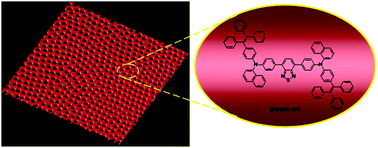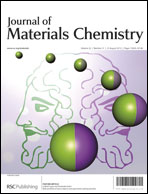Fabrication of small organic luminogens honeycomb-structured films with aggregation-induced emission features†
Abstract
We report the successful fabrication of honeycomb structure by breath figure (BF) process from the small molecule tetraphenylethene (TPE) derivatives, showing an extraordinary phenomenon of aggregation-induced emission (AIE). In this process, TPE derivatives with the twist and non-planar substituted groups are chosen; TPE units are easier to become amorphous than crystalline. This is critical for gaining the viscosity and stabilizing the water droplets during evaporation. Characteristics of the confocal fluorescence and the fluorescent spectrum indicate that these honeycomb structures are highly emissive due to the AIE feature of TPE derivatives. These structures lead to a small red-shift of the photoluminescence compared to the smooth film. The success of fabricating TPE derivatives honeycomb structure may, for certain applications, represent an advance with respect to the more commonly used polymers, due to the inherent drawbacks of polymers such as phase separation, non-reproducibility of molecular weight distribution from batch to batch. These findings should open a way for the development of the honeycomb structure material with small organic molecules. Such a structure will be useful in many areas, such as sensors, microelectronics, optoelectronics and even biomaterials.


 Please wait while we load your content...
Please wait while we load your content...